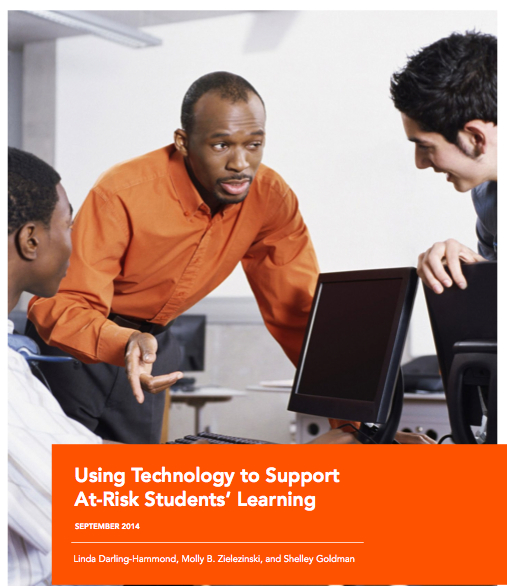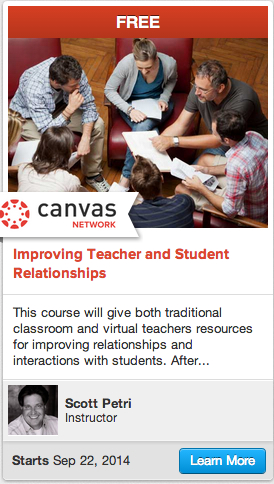Linda Darling-Hammond, Molly B. Zielezinski, and Shelley Goldman just published Using Technology to Support At-Risk Students’ Learning. This thoughtful review of more than seventy recent studies found that educators using technology to improve student learning have had mixed results. Often, the promise of ed tech has failed to meet the high expectations policymakers have heaped on the sector, however, there have been many successes and the authors sought to reveal promising approaches for technology implementation.
In one study, several 9th-grade English classrooms were given technology to practice skills and create new content. Those classrooms outperformed advanced placement sections that studied the same material without technology. The teacher reported that technology allowed for more active instruction that could be differentiated to meet the needs of individuals and that students wanted to be a part of that personalized and active environment.
The following bullets may be retweeted without crediting me. Feel free to hashtag them #SCOPE, or #AtRisk. They came from a Twitter barrage that summarized and highlighted the sections of the report that resonated with me as an ed tech enthusiast, who has worked with large numbers of at-risk students over the last 11 years. These students deserve access to effective education technology. Getting these tips out to policymakers and education thought leaders is one way to make that happen.
- 16M Students live below the poverty line. 8M get free lunch. Children in poverty are 50% of US students.
- Many schools serve 100s, or 1,000s of users with the same bandwidth as a single home user.
- 30% of households don’t have high-speed broadband. Slow connection rates are in nonwhite and low-income households
- Research shows that if at-risk students gain access to technology, they can make substantial gains in learning
- Drill and practice activities in low SES schools tend to be ineffective.
- Uses of tech are disproportionate in high-SES schools where they achieve positive results.
- A benefit of well-designed interactive programs is they allow students to see concepts from multiple perspectives.
- Students learn more when they use technology to create new content themselves rather than receiving of content designed by others.
- Researchers found that 1:1 availability is important for lower-income students’ ability to gain fluency.
- Teacher assistance seems to be mandatory for the online learning of underprivileged students.
- Reports of the flipped classroom are generally positive overall. Students prefer interactive classroom activities
- College students in flipped classrooms are more likely to watch video lectures than to complete readings
- Tech policy should aim for 1:1. At-risk students benefit from opportunities to learn that include 1:1 access to devices.
- Technology access policies should ensure that speedy internet connections are available.
- At-risk students benefit from technology that promotes high levels of interactivity with data & info in multiple forms
- Coupled with PBL & support for teachers, digital learning can shift school culture & strengthen 21st century skills
- Plan for blended learning environments to have high levels of teacher support & interaction between students
- Instructional plans should enable at-risk students to use technology to create content as well as learn material.
This report complements the findings of Pollock et al (2014) who characterized the types of support teachers should provide in hybrid classrooms. The SCOPE report reiterates that replacing teachers with technology will not be a successful formula and that teacher assistance “seems to be mandatory for the online learning of underprivileged students.” This report was released by the Alliance for Excellent Education and Stanford Center for Opportunity Policy in Education (SCOPE). A copy of the full report is available here: https://edpolicy.stanford.edu/sites/default/files/scope-pub-using-technology-report.pdf







